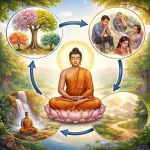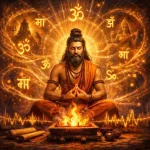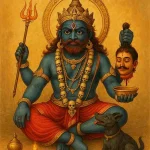How Digital Rituals and Virtual Darshans Are Reshaping Hindu Practice
In an age where technology mediates almost every human experience, religion too has entered the digital realm. Across India and the global Hindu diaspora, smartphones, livestreams, and social media have become new pathways to the divine. The idea of darshan — seeing and being seen by the deity — once required physical presence at a temple. Today, millions experience it virtually, through screens. This digital transformation is not merely a convenience; it is reshaping how Hindus pray, participate, and perceive their faith.
The Rise of Virtual Darshans
The concept of darshan has always been central to Hindu devotion. It is not just visual worship but a sacred exchange of energy between devotee and deity. Traditionally, this required visiting temples or pilgrimage sites in person. However, the COVID-19 pandemic accelerated a shift that was already underway. With travel restrictions and temple closures, devotees turned to technology. Temples from Varanasi’s Kashi Vishwanath to Tirupati Balaji and Shirdi Sai Baba began livestreaming their daily aarti and rituals on YouTube and other digital platforms.
These online services drew millions of viewers, often exceeding the physical capacity of the temple itself. For many, this was the first time they could witness rituals from afar in real time. The practice didn’t end with the pandemic — it created a new norm. Virtual darshans now coexist with physical visits, making sacred experiences accessible to those far from home, the elderly, or members of the diaspora.
Apps and the Digital Devotion Economy
The growth of digital devotion has given rise to an entire religious-tech ecosystem. Mobile applications now offer everything from puja bookings to astrology consultations, and even personalized chanting sessions. Platforms like Divine India, Bhakti World, MyMandir, and Iskcon Desire Tree provide 24/7 access to mantras, devotional songs, and live temple feeds.
Digital offerings — e-pujas and e-aartis — allow devotees to book rituals remotely. Priests perform them on behalf of the devotee while streaming the ceremony live or sharing recorded blessings. Payment gateways make it easy to donate to temples online, while digital tokens represent offerings that once required physical presence.
This shift has also democratized access to rituals. For many who could never afford long pilgrimages or travel expenses, digital rituals provide inclusion without barriers. At the same time, it has opened a new form of religious commerce — the “digital temple economy” — where faith meets fintech.
How Devotion Feels Different Online
Virtual darshan is not a perfect substitute for standing before a deity in person. The physical sensations — the smell of incense, the sound of bells, the crowd’s collective energy — are difficult to replicate on a screen. Yet, many devotees describe an unexpected intimacy in digital worship. Watching a livestream alone allows deeper focus and personal reflection.
Moreover, digital devotion fits into the pace of modern life. People now join morning aartis during office breaks or listen to Hanuman Chalisa while commuting. Religion is being reimagined as something that travels with the individual, not confined to a temple’s walls or a fixed time. This mobility is changing not only how people worship but also how they define spirituality — as a fluid, portable, and on-demand experience.
The Role of Social Media and Influencers
Platforms like YouTube, Instagram, and Facebook have become new-age temples of devotion. Religious influencers — from priests to spiritual teachers — now share teachings, rituals, and mythological storytelling with millions of followers. Festivals like Navratri, Janmashtami, and Maha Shivratri trend online, with hashtags like #VirtualDarshan and #OnlinePuja connecting devotees worldwide.
This digital visibility has revived interest among the youth. Many young Indians, who might not visit temples regularly, now engage with devotional content through reels, podcasts, or livestreams. Through gamified devotion and relatable explanations, spiritual education has become both modern and interactive.
Temples in the Age of Technology
Major temple trusts in India have embraced this transformation. The Tirumala Tirupati Devasthanams, for instance, manages one of the largest online platforms for booking rituals and donations. Similarly, the Somnath Temple in Gujarat and the Sabarimala Temple in Kerala have launched mobile apps providing updates, live videos, and e-services.
For the global Hindu diaspora — from the U.S. to Singapore — these virtual connections are emotionally significant. They bridge the distance between devotees and their homeland’s sacred spaces. Temples abroad are also adopting hybrid formats, combining physical rituals with digital participation, ensuring that even those thousands of miles away can join in real time.
Challenges and Critiques
Despite its reach, digital devotion raises certain questions. Can a streamed ritual hold the same sanctity as one performed in person? Some traditionalists argue that the essence of darshan lies in physical presence before the deity — the vibrational energy that technology cannot transmit. Others worry that commercializing online rituals may reduce devotion to a transactional experience.
Yet, defenders of digital faith point out that Hinduism has always been adaptive. From oral traditions to printed scriptures to televised rituals, every era has found new ways to preserve spiritual connection. Technology is simply the latest tool in this lineage.
A New Chapter in Hindu Spirituality
The fusion of faith and technology is creating a hybrid form of Hindu practice — one that honors tradition while embracing innovation. Digital rituals and virtual darshans do not replace the temple experience; they expand it. They make worship more inclusive, accessible, and personal.
In the coming years, augmented and virtual reality may take this even further — allowing devotees to perform 3D pilgrimages or immersive temple visits. What began as necessity during a pandemic has evolved into a revolution of devotion.
~Religion World Bureau









